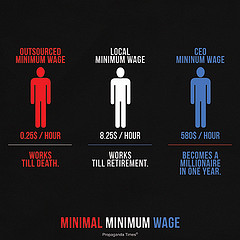The Food and Drug Administration recently proposed a slew of changes to the nutrition labels on packaged foods. The first to be made in over 20 years, these changes will include placing a bigger emphasis on total calories and added sugars as well as highlighting certain nutrients, such as Vitamin D and potassium. They are also proposing to make changes to the serving size requirements, making them more “realistic” about what portions of a product people actually consume in a single sitting. The purported goal of these changes is to help consumers “make healthy food choices”, but sociologists show that these choices are not necessarily available to everyone.
The media, as well as most consumers, see diet and eating habits as a personal choice. However, research shows that not all consumers are financially, or even geographically, able to make conscientious decisions about the calories they consume.
- Flis Henwood, Roma Harris, and Philippa Spoel. 2011. “Informing Health? Negotiating the Logics of Choice and Care in Everyday Practices of ‘Healthy Living.’” Social Science & Medicine 72(12): 2026-2032
- Mark Winne. 2008. Closing the Food Gap: Resetting the Table in the Land of Plenty. Beacon Press.
The choices made at the federal level about dietary guidelines and labeling are not just about making sure we all get the right amount of Vitamin D. The food industry is a profit-making business just like any other, and its influence on government nutrition policies runs deep.
- Marion Nestle. 2003. Food Politics: How the Food Industry Influences Nutrition and Health. Berkeley: University Of California Press.
The media coverage of this proposal is largely positive, framing it as a step towards curbing America’s “obesity epidemic”. This kind of media coverage furthers the intense stigmatization of obese people and reinforces norms that equate thinness with moral virtue and social worthiness.
- Abigail Saguy and Kjerstin Gruys. 2010. “Morality and Health: News Media Constructions of Overweight and Eating Disorders.” Social Problems 57(2): 231-250.
- Margaret Mead. 1971. “Why Do We Overeat?” in Food and Culture: A Reader. 2013. Carole Counihan and Penny Van Esterik (eds). Routledge.
For more on culture and obesity, check out Abigail Saguy’s “Office Hours” interview where she discusses her book What’s Wrong with Fat?
![]()

